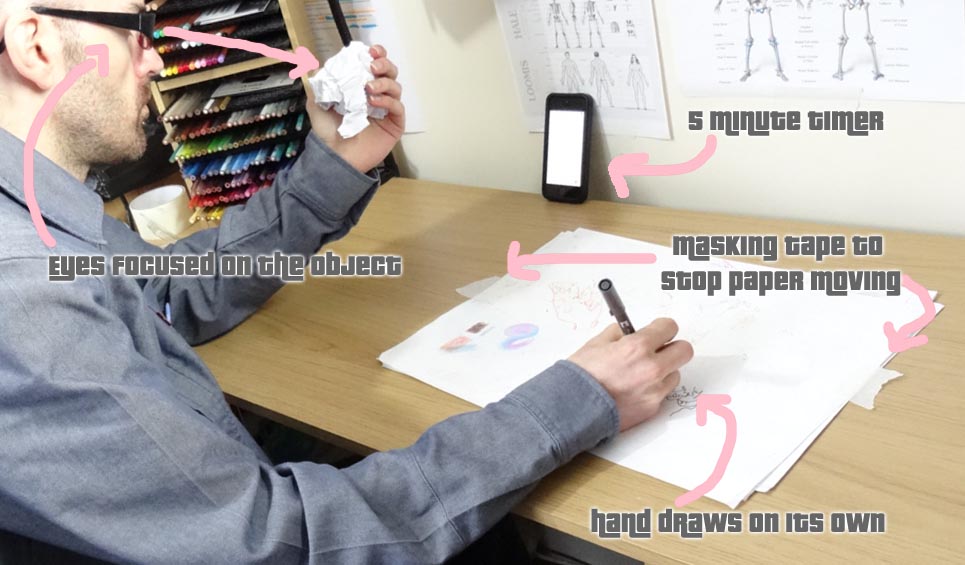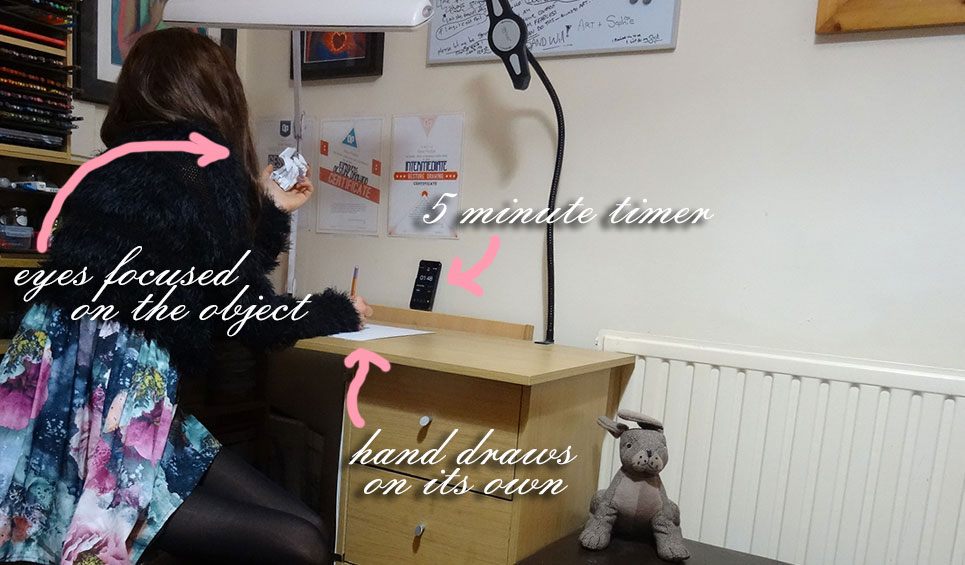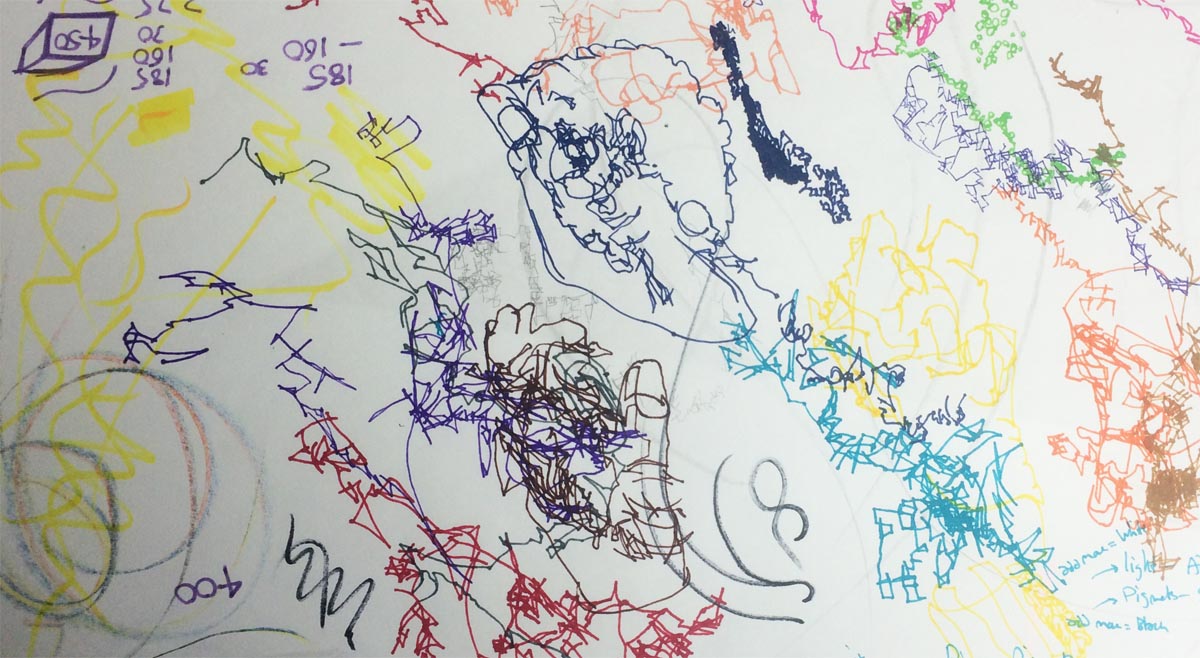BLIND CONTOUR DRAWING • DRAWING EXERCISE

WHAT IS IT?
It’s probably worth knowing what contour drawing is first. Contour drawing is basically outline drawing, aka, only drawing the lines that represent the edges of things. Blind Contour Drawing, also known as pure contour drawing, is simply drawing the contour of something highly complex, without looking at your drawing. Thus, drawing blind :) Betty Edwards describes blind contour drawing as requiring “…that you slow way down to see and draw everything, while never looking at the drawing.”
HOW TO DO IT?
As you can see from Betty’s quote above, you’ll be drawing without ever looking at your actual drawing. This means you’re focused on the object instead, forcing your eyes and hand to work together, whether they like it or not :) You can draw anything, but something that is highly intricate and random is best, as your mind can get lost in the details. I normally grab a scrunched up piece of paper from the bin and turn it into an interesting shape, but you could use all the intricate wrinkles of your hand, or the pattern from the fabric of your socks for instance.
Blind contour drawing is very easy to do, in fact, all you need is a pen/pencil, paper, and a timer. I recommend using a pen, because if you use a pencil and it snaps, it will break (pardon the pun) your flow :) I also suggest getting some Scotch Removable Magic Tape, to stick your paper down so it doesn’t move about as you draw. With everything ready you
- Set a 5 minute timer
- Close one eye
- Focus on the object you intend to draw with the other eye
- Let your hand draw on its own
- Never look at your drawing, only focus on the object for the full five minutes
You end up producing what looks like the scribblings of a crazy person, I’m sure if someone looked through the window and saw you starring at pieces of paper for 5 minutes during one of these exercises they’d probably think you are :) That’s all there is to it, no peaking, no stopping, just making sure your eye follows whatever line it wants to nice and slowly.
The aim is to get your drawing hand to follow your eye in complete sync. It’s best to do this exercise very slowly, with your eyes moving along the lines of the object slowly, and your hand trying to draw the same line, at the same pace.
The image below shows my blind contour drawing pose, so you can get a better idea of how to do it. I’m normally twisted a bit more to the left so I can’t even see the paper. I included the original Kevin photo I did, along with one of me now :)


WHY DO IT?
The main goal is to improve your hand-eye coordination, along with your overall ability to both see and draw. Over time, your hand will be moving at the same pace as your eye. So you will be able to draw things completely as you see them, you ability to judge proportions will massively improve with this exercise. At Life Drawing class for instance, I’ve noticed I’m more and more drawing the model, without paying any attention to the lines I’m physically drawing. The same is also true when doing realistic drawing at home. It’s like you’re training your eyes to focus on seeing, you hands on drawing.
EXAMPLE
Below is an example sheet of my blind contour drawings. If you do this exercise every day, you’ll soon end up with sheets of paper all over the place covered in these little blind contour scribbles. In a strange way, I find them intriguing to look at; sometimes for instance you may be able to make out a finger nail amongst the scribbles, or part of an object :)

IS IT FUN?
It depends. There are times when it can feel tedious, especially when you first sit down to do it. I sometimes feel like skipping it and going right into a drawing, but I always say NO, and within a minute or two of forcing myself to start the exercise, I normally get lost in it. Sometimes I’ll have gone into the exercise wanting to skip it, only for the timer to go off after five minutes and have this desire to keep going. It’s the hardest drawing exercise for me to want to do, but it’s the one where I feel the most benefit.
CONCLUSION
Tedious at times, but massively important. Blind Contour Drawing is now just part of my process when doing a realistic drawing. Whether I feel like doing a 5 minute blind contour drawing or not, I just do it and enjoy the thought of my hand – eye getting more in sync. This is one drawing exercise where you will feel the most positive impact on your seeing and drawing ability the soonest.
Highly recommended!
ART ENABLES US TO FIND OURSELVES AND LOSE OURSELVES AT THE SAME TIME
– Thomas Merton
